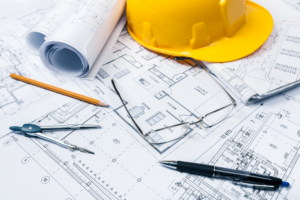Design-Build vs Design-Bid-Build: Which is Right for Your Project?
The design phase of your structured cabling project is the most crucial, low voltage systems require the proper planning, design, installation, and maintenance to ensure the effectiveness of the network. Structured cabling supports Wi-Fi, IoT technology, security systems, Distributed Antenna Systems (DAS) and audio-visual systems to name a few. A structured cabling system, also known as low voltage system, is a complete system of cabling and hardware that provides a comprehensive telecommunications infrastructure to communicate data and information.
Project Delivery Methods
Choosing a project delivery method is one of the most important decisions that property owners must make before beginning a construction project. Design-build and Design-bid-build are the two main project delivery methods, owners will choose the best method based on which fits the project size and the project goals. Both design-build and design-bid-build projects come with their benefits and drawbacks and owners should evaluate the cost effectiveness, the level of owner control, the project budget, the project schedule, and the risks involved before making a decision.
What is a Design-Build Project?
Design-build projects require the hiring of a single entity to perform the design and construction aspects under a single contract. In this delivery method the design-builder entity is responsible contractually and is in charge of the architectural, engineering design services and construction. During design-build projects the design-builder entity is responsible for meeting the standards set forth by the owner in the contract.
Design-Build Benefits
Meet Budget Expectations
Design-build projects allow owners to have early knowledge of the firm costs, as this method requires the collaboration between the contractor and the designer throughout the project. Collaborating throughout a project allows team members to identify and fix issues early on and results in fewer changes and fewer claims.
Faster Timeline
Since a single entity is responsible for all aspects of the project and there is no time-consuming bidding process, design-build can deliver projects faster. This method enhances the project coordination, a recent study done by Penn State found that design-build projects had a 6% reduction in change orders and were delivered 33% faster.
Quality of Work
When owners pick a design-builder that meets their specific qualifications, projects will have lower difficulty in start-up, have fewer call backs and will be able to meet the project goals. Design-build teams with experience working together have the potential to deliver a quality project that meets the owner’s standards.
Reduced Risk for the Owner
During the design-build project, both the designer and contractor are contractually obligated to work together to ensure that the project goals are met. The design-builder entity assumes the risk of completing the project which leads to less change orders that can impact the budget and the project schedule.
Streamlined Communication
During design-build projects the communication process is streamlined, as the design-builder entity has to work together from the beginning of the project up until its completion. This allows for a more coordinated project with team-members who work better together.
Design-Build Disadvantages
No Competitive Bids
The owner may not get the most competitive pricing as there is no bidding process that awards projects to the lowest bidder.
Harder to Price Shop
This method bypasses the bidding process, so owners cannot choose a vendor based on price and all services are offered from one provider. Most design-builder entities won’t begin a detailed design until they’ve been hired, making it harder to price shop.
What is a Design-Bid-Build Project?
Design-bid-build is the most traditional project delivery method used during a construction project. In this delivery method, the owner enters into a separate contractual agreement with the designers and the contractors. During a design-bid-build, the design firm is hired to deliver 100% complete design documents. The owner then solicits fixed price bids from contractors to perform the required work.
Design-Bid-Build Benefits
Competitive Bids
Design-bid-build allow owners to get the most competitive pricing, as contractors will be competing to offer the best prices in an effort to be awarded the contract.
Clearly Defines Roles
Since the owner has separate contracts with the designer and the contractor, the design and construction roles are independent. The designer is responsible for the design aspect according to the contract and the contractor is responsible for building the project as designed.
More Control
The design-bid-build method gives the owner more control of the project as the owner is involved in every step of the process and is responsible for choosing the contractor and the designer. The owner can freely make changes and is ultimately responsible for the outcome of the project.
Design-Bid-Build Disadvantages
Late to Define Budget
The construction cost of the project is not firm as it requires the design stage to be completed before a contractor is solicited. The bidding process can leave owners over their budgets and can result in additional costs of redesigns and rebidding, which can lead to delays.
Extended Timeline
The design-bid-build process may have a longer duration when compared to design-build projects since all design work must be completed prior to soliciting the construction bids. Project delays can result from redesigns and change orders and can prevent projects from staying on track.
More Risk for the Owner
The owner has more control of the project and therefore also shoulders the responsibility for the success or failure of the project. The owner is responsible for the completion of the design documents and would also be responsible for any potentially expensive change orders.
Poor Communication
The design-bid-build process involves teams that work separately, and designers may work without the input of the contractors. There is no contractual relationship between the contractor and the designer and there is no opportunity for collaboration during the design phase. This can have an impact on communication and has the potential to lead to additional costs and delays in schedules.



